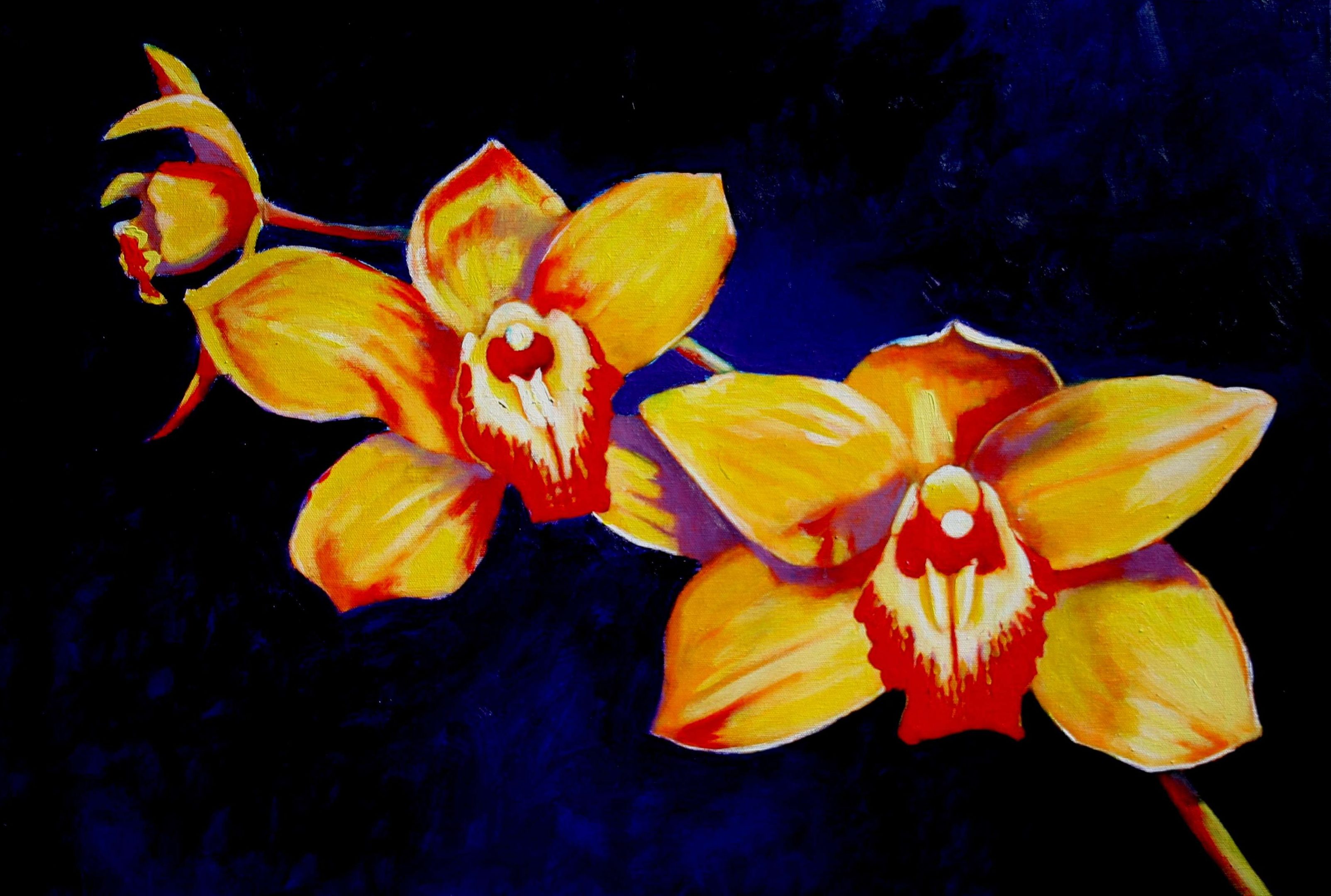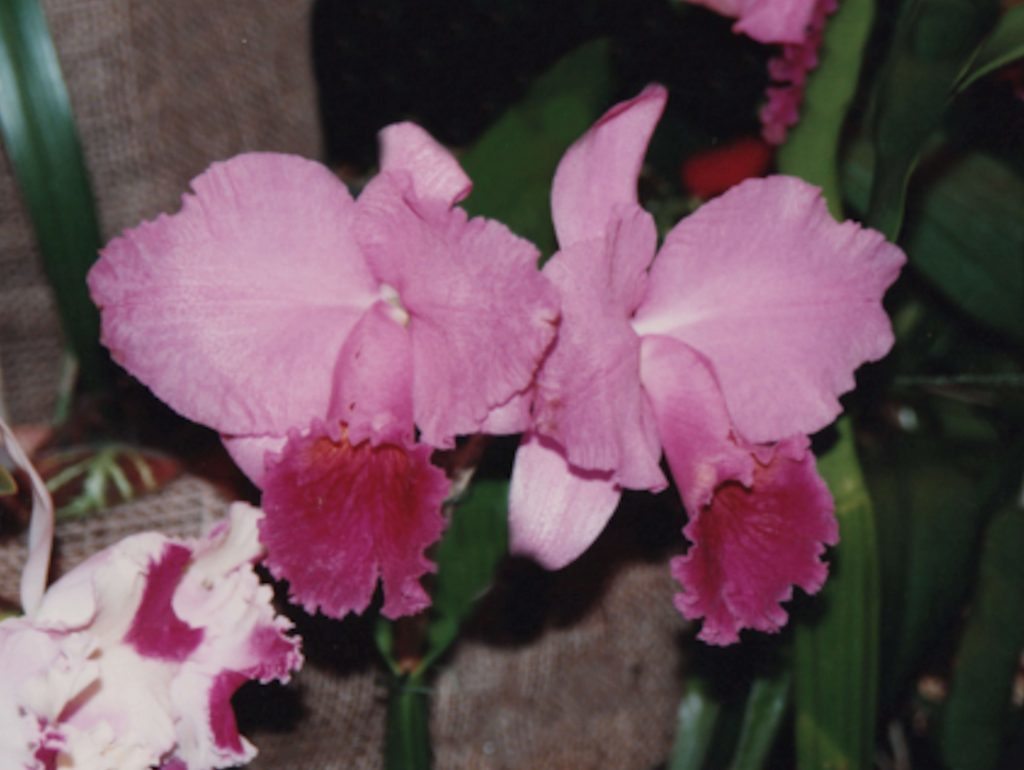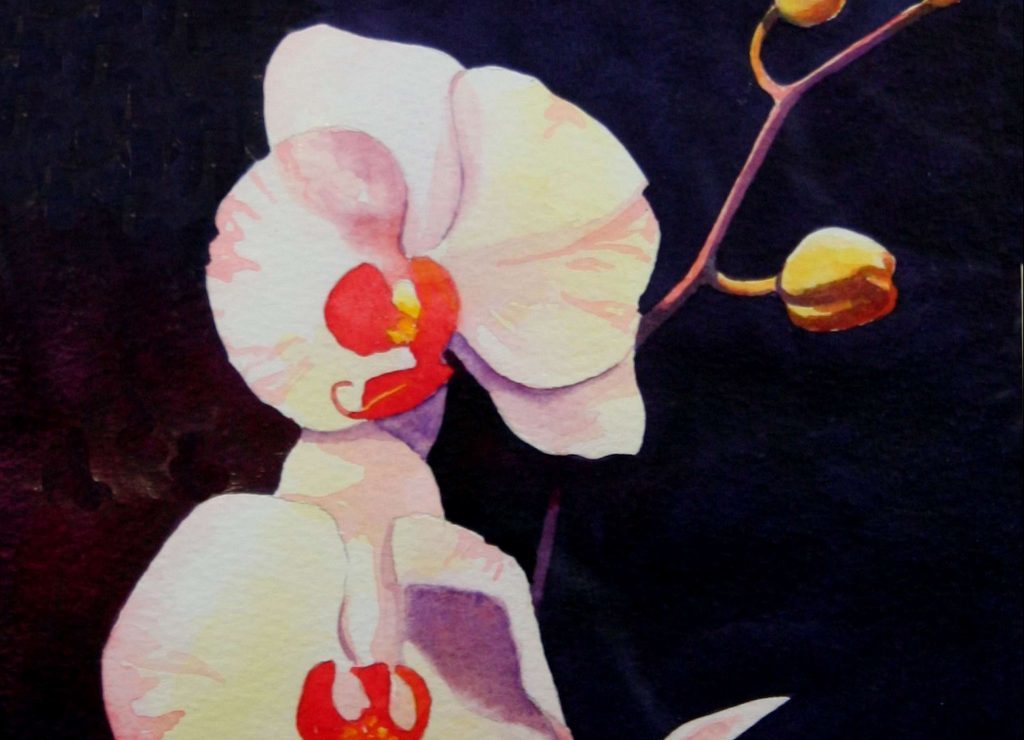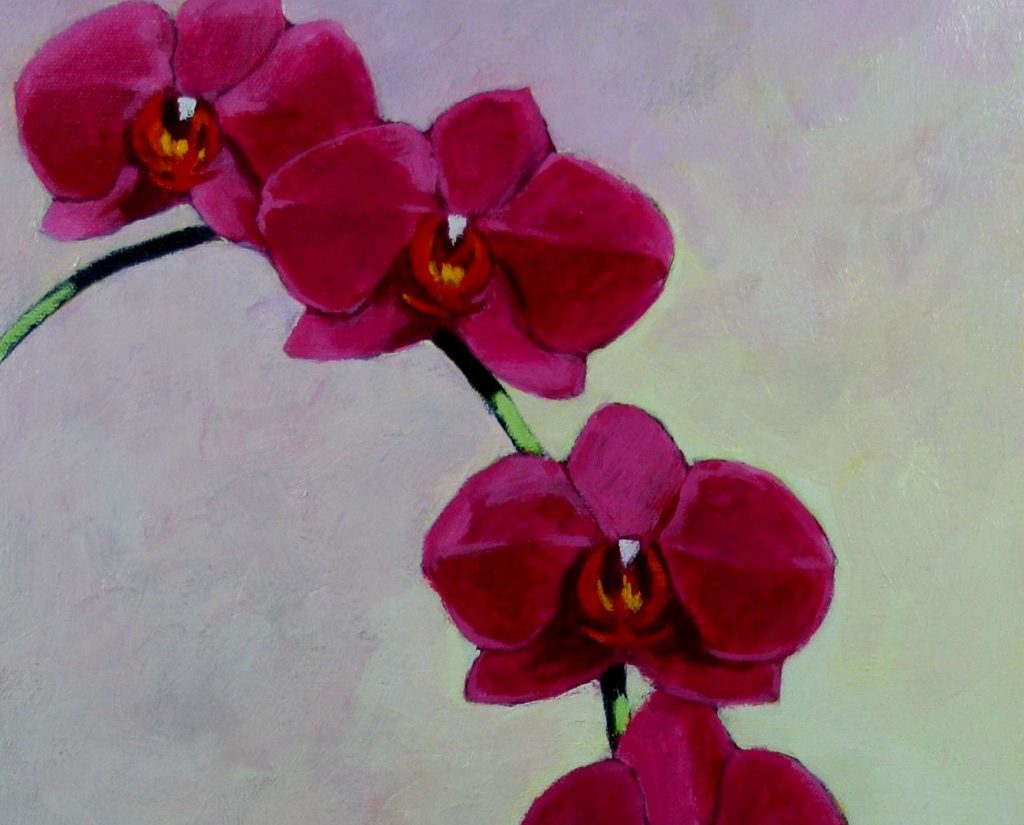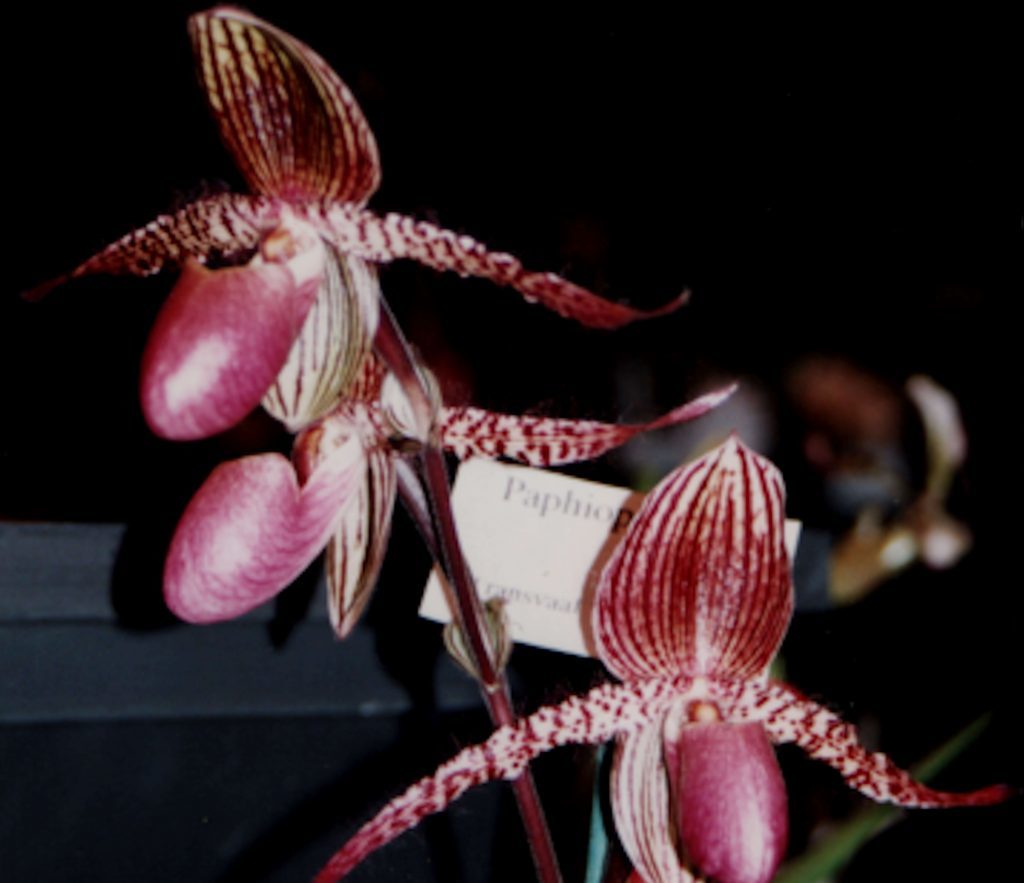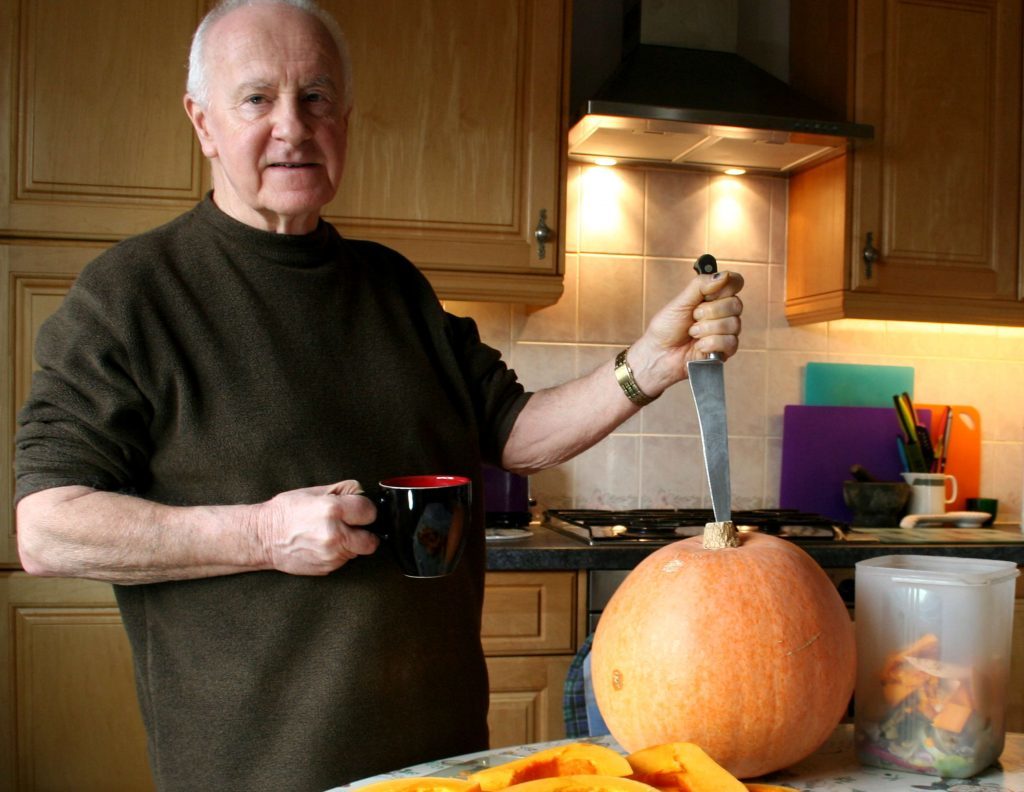Orchids once held the reputation of being expensive to buy and difficult to grow as these exotics were not native to our climate.
Plant collectors and breeders have now introduced us to a massive array of orchids that most folk can try out with varying degrees of success.
I have grown these both for the impact of large beautiful flowers, but also as a subject for numerous orchid paintings.
Many of my art class students also like to paint these exotic flowers from their own plants.
Habitat
There are many types of orchid native to Scotland, though these grow in the ground preferring damp areas and banks just above boggy ground so the roots are not in standing water.
These types are known as terrestrial but the common ones we see flowering in garden centres are mostly epiphytic in origin coming from rain forests in tropical environments.
These cling to tree trunks and branches where there is high humidity. They roots hold the plant in place and aerial roots which hang below the plant and absorb moisture from the air.
They do not draw on their host plant for nutrients but rain with atmospheric nitrogen washes nutrients down in bird droppings, and small amounts of leaf mould produced by natural falling leaves.
Culture
Phalaenopsis are usually quite reliable and very rewarding with repeat flowering every year from autumn through winter.
They will come in pots with ample holes for drainage and planted in special orchid compost.
This is often a mixture of bark chips, coarse graded peat, charcoal to keep the mixture sweet, nutrients and trace elements.
Re-pot in spring after two to four years as growth commences. Once flowering is over allow the plant some dormancy. Keep it in a cooler spot with good light but not in full sun, and water less often, but do not let it dry out.
Do not feed at this stage or repot. Never leave the plant in standing water as they all require free draining compost.
Orchids are not heavy feeders so just give them an orchid feed once every two to four weeks.
Propagation
Orchids sometimes produce basal offshoots that can be separated for growing on once they have produced their own roots.
Others can produce many pseudobulbs, or swollen stems which can be split up and repotted.
Before potting up, remove any broken, diseased or dead roots, and make sure there is plenty of drainage in the bottom of the pot before adding orchid compost. Repot into the nearest size for the plant as they prefer to be root bound before they settle down to flower. Do not put the aerial roots into the pot when potting.
Phalaenopsis are now a very popular pot plant and one of the easiest orchids to grow with long racemes of large flowers lasting for many months. They are fine on a sunny windowsill in Scotland from autumn till spring, but then give them a more shady position for summer.
Cymbidiums flower in autumn to spring producing many spikes with up to twenty flowers each lasting for months. The plants can grow quite large and are happy in a cool room.
Paphiopedilums grow from rhizomes just below ground level and produce medium sized flower stems with just one or a few flowers. They like to be kept lightly shaded. Propagate by division in spring and repot every second year in the smallest pot available.
Cattleyas are very flamboyant with large colourful flowers which are often highly perfumed.
Wee jobs to do this week
Pumpkins in storage need checking, but can keep till end of March in a good year. We still have three left so this one getting cut up for the pot is still in a perfect condition at the end of February.
Anna will roast some of these slices with nutmeg, honey and butter for tonight’s supper. The rest will get roasted, and then skin removed before bagging up for the freezer.
Later on they will be used for soup, risotto, pumpkin pie and as a vegetable with a bit of seasoning. Even with young grandchildren visiting there’s just no chance these will end up as lanterns.
